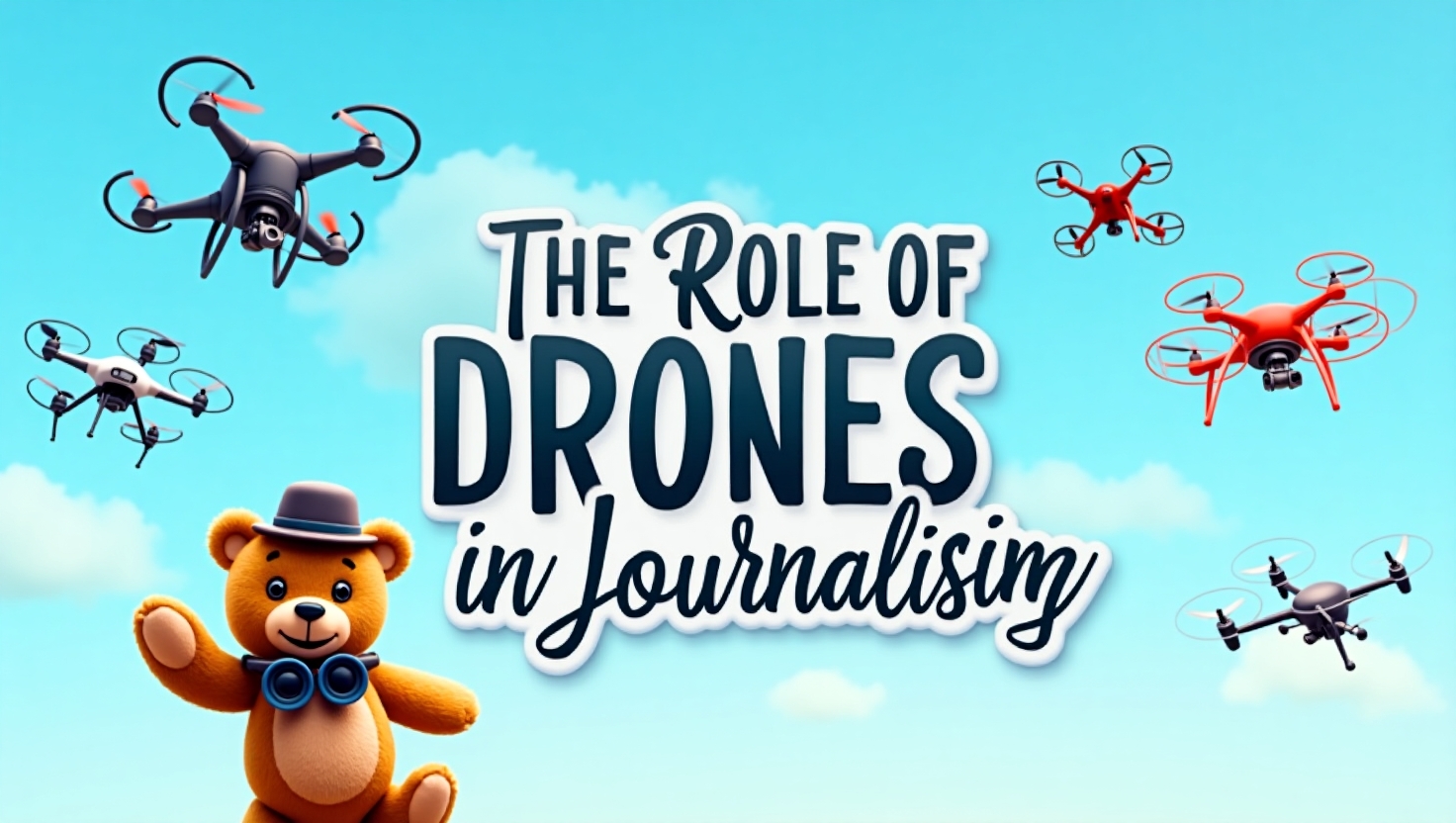In today’s fast expanding digital landscape, journalism is undergoing a technological metamorphosis. Among the most inventive tools transforming the way tales are conveyed is the drone. Once employed solely for military or recreational purposes, drones — also known as Unmanned Aerial Vehicles (UAVs) — are increasingly playing a critical role in journalism. From covering natural disasters to recording high-definition overhead footage of protests, drones have become a vital feature of modern newsrooms.

A New Eye in the Sky
Drones give journalists with a strong new perspective. Traditional cameras and reporting tools are confined to ground-level perspectives, but drones can record sweeping overhead photos that give dimension and scale to a story. This is especially beneficial in covering large-scale events such as: Natural disasters including floods, storms, and wildfires Political protests and rallies Environmental damage such as deforestation or oil spills Urban development and infrastructure initiatives The ability to fly above crowds or dangerous terrain allows journalists a safer and more effective approach to acquire dramatic visual content that would otherwise be difficult or impossible to obtain.
One of the main advantages of employing drones in journalism is their capacity to enhance storytelling. Powerful images may transform a decent story into a terrific one. Drones can capture high-resolution photographs and movies from new viewpoints that captivate audiences and provide more context. For instance, during the 2020 Australian bushfires, drone video was used to highlight the huge scope of the devastation, allowing viewers a clearer perspective of the event’s severity. In crisis zones, drones can quietly shoot film from above, lowering risk to journalists while yet conveying essential information to the public.
Faster, Safer, and More Cost-Effective
Traditionally, aerial footage needed helicopters, which are expensive, noisy, and logistically demanding. Drones, on the other hand, are very economical, easy to operate, and capable of accessing hard-to-reach locations without sacrificing human lives. For example, when covering risky circumstances like crumbling buildings or poisonous environments, drones can be flown in to assess the situation without placing journalists in harm’s way. This not only increases safety but also enables for faster news coverage in real-time.- Investigative Journalism and Data Collection
Drones are also becoming excellent instruments for investigative journalism. With advanced technologies like infrared imaging, GPS, and real-time video feeds, drones can assist reveal hidden details or analyze patterns over time. Investigative reporters can use drones to: Monitor illicit mining or logging operations Track the spread of pollution in rivers or lakes Document changes in landscapes over weeks or months Survey inaccessible or restricted locations This data-driven method delivers convincing information to back investigative findings and hold power

Legal and Ethical Considerations
Despite the obvious benefits, the use of drones in journalism is not without obstacles. One of the key concerns is privacy. Drones can capture footage without consent, raising worries about ethical and legal bounds. Journalists must balance the public’s right to know with individuals’ right to privacy. Additionally, there are tight rules regulating drone operation in several nations. Journalists must get licenses, obey no-fly zones, and comply with aviation laws to avoid legal issues. Understanding these rules is vital to prevent penalties and ensure ethical reporting.- Training and Responsibility
Operating a drone isn’t as straightforward as flying a toy. It takes expertise, precision, and awareness of airspace rules. News organizations are now investing in drone training for journalists to ensure they can operate drones safely and lawfully. Drone journalism also comes with a responsibility to use this powerful technology ethically. Manipulating footage, breaching privacy, or employing drones for sensationalism can destroy a media outlet’s credibility. Responsible drone journalism should always serve the public interest and retain journalistic integrity.
The Future of Drone Journalism
As technology advances, the use of drones in journalism will only rise. Future drones may incorporate greater battery life, AI-powered flying paths, obstacle recognition, and 4K or possibly 8K video capability. Drones may also become part of live broadcasting, giving aerial images during live news programs. We may also see cooperation between drone pilots and data scientists, integrating pictures with environmental or geographic data to generate deeper, more relevant stories. Ultimately, drones represent the next frontier of journalism – one that’s immersive, data-rich, and visually compelling

. Conclusion
Drones are revolutionizing journalism by delivering a new perspective through which we view the world. They enhance storytelling, promote safety, and empower journalists to seek the truth in novel ways. While obstacles like privacy concerns and legal limits remain, the benefits greatly exceed the downsides when utilized appropriately. As journalism continues to change, drones will remain an important component of the toolset for reporters who wish to enlighten, inspire, and engage audiences in the digital era role of drones in journalism, drone journalism, benefits of drones in news, drone reporting, how journalists utilize drones, drones in media, future of journalism technology



